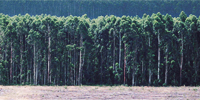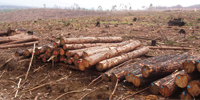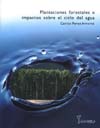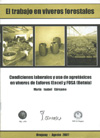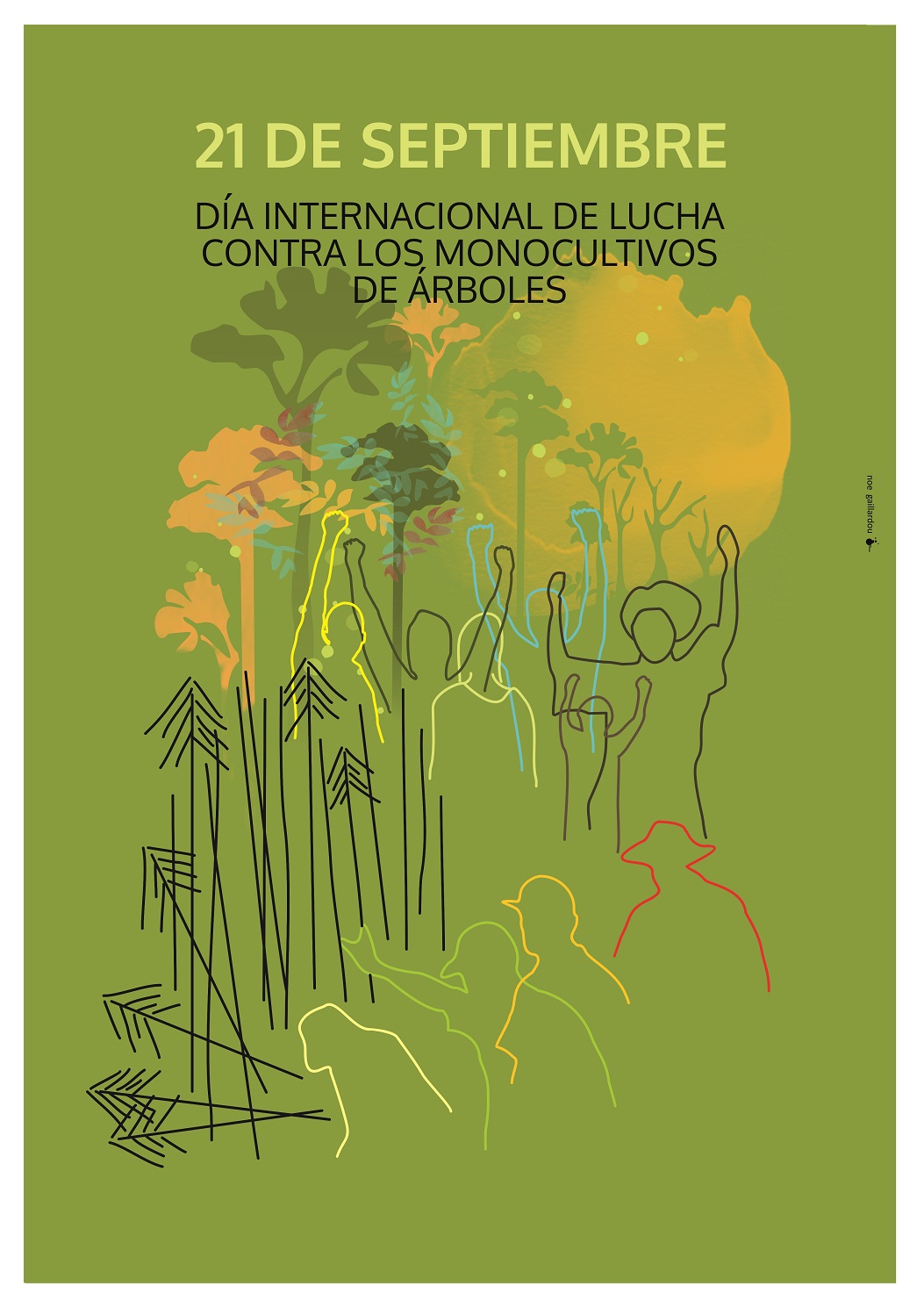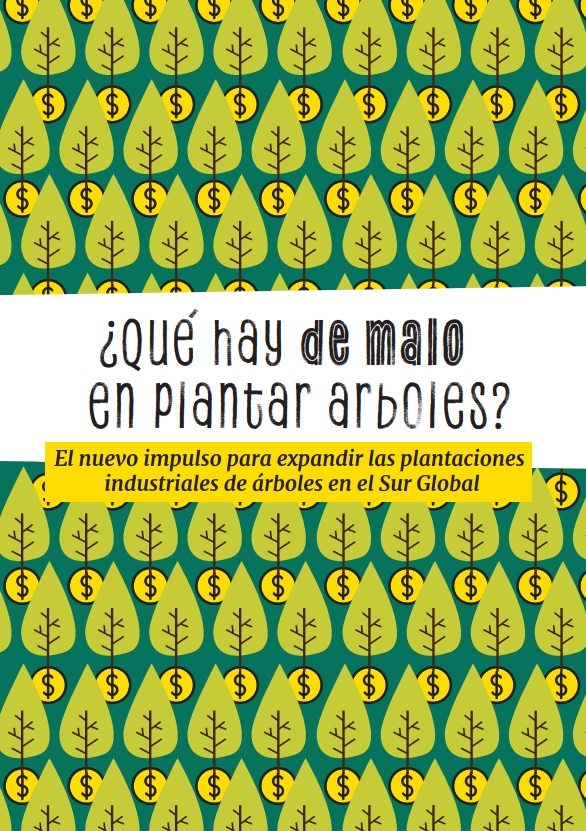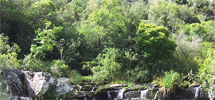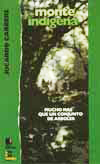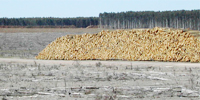by Ricardo Carrere
The Finnish company Botnia has a peculiarity that distinguishes it from all other enterprises –national and foreign – existing in the country: its confinement in enclaves closely monitored by private security guards and police officers. During a brief visit to Paysandú and Fray Bentos on 28 and 29 July, we were able to identify four such enclaves: the nursery, the factory, the workers’ neighbourhood and the executive’s neighbourhood. There is even a fifth enclave (the private school for the Finnish executives’ children) but we will leave the subject of children aside.
The nursery fortress
Botnia is the owner of some 160.000 hectares where it has installed its plantations under the name of Forestal Oriental (FOSA). The eucalyptus saplings for the plantations are grown in the San Francisco nursery located at 8 kilometres from Paysandú. Some 30 company officials and about 100 workers from Nazca, a contractor company, work there. Very recently the nursery has been totally enclosed by a 3 metre high very thick wire netting fence with enormous spotlights. It also has 6 security cameras and a very high aerial is now being installed. The entrance gate is only opened if it is announced who is there. At all events, visits are programmed and the workers arrive by bus. Security guards are posted at the entrance and patrol the nursery and the company has hired police custody for the night shifts. Once inside the nursery the workers may not leave unless authorized, not even during their one-hour (unpaid) lunch break. Nor are they allowed to enter if they are a few (2-3) minutes late, whatever good reason they may have for not arriving on time.
The factory fortress
Just like any other factory, it is understandable that access is limited. What is not understandable is that no photos can be taken. Last June we went by car to the international bridge with the sole aim of taking a photo of the factory from the bridge. The coastguard officials who are based at the entrance to the bridge told us it was not permitted to take photos of the factory. A month later we were on our way to Fray Bentos from Paysandú and we passed in front of the factory. We stopped there to take a photo. Immediately a security guard came up to us and told us that taking photos was not allowed and that if we wanted to do so we had to request permission from the office. We replied that we were on a public highway and that he had no authority to prevent us from taking photos and we proceeded to take some. Later we were on our way to the Ubici Beach, located a few kilometres away, where we were able to take all the photos we wanted of the industrial plant – this time with no restrictions.
The workers’ neighbourhood fortress
Near the entrance to the factory, on the other side of the road, is located a neighbourhood allocated to the company’s foreign workers. There are two types of dwellings there, containers and houses. Just like a fortress, every so many metres there are security booths with security guards and police officers monitoring the housing. In view of the previous experience regarding “taking photos” this time we decided to get into friendly conversation with a guard before proceeding – with his permission – to take some photos. This conversation led to some interesting results as we were lucky enough to find someone who had a deep knowledge of local history. He told us that the case of Botnia is a repetition of the experience they had when the international bridge was being built. This left two after effects: the trebling of cases of venereal diseases and an increase in teen-age pregnancies. According to our informer, the consequences now will be similar, but there will be many more cases.
Botnia’s residential neighbourhood fortress
Botnia’s fourth fortress is located on the way out of Fray Bentos, on the way to the Las Cañas resort. Here we find a neighbourhood of large houses where the company’s (mainly Finnish) high executives live. Here too the Botnia officials are guarded by security guards in their security booths. Aware of the company’s allergy to photos, we took photos from inside the moving vehicle in the space between one booth and another. Then we stopped at the last security booth and asked the guard if we could cross the neighbourhood to reach the road. We spoke to the friendly guard for a few minutes and he told us that there was no problem, but when we took our leave he said “all that I ask you is not to take photos, because these people don’t like having their photos taken.” And this time, out of respect for the guard, we did not take any. It was a pity as we passed a strange-looking building that we would have liked to photograph, almost surely a Finnish sauna.
Why are there so many fortresses?
The construction of fortresses is justified when there are real or potential enemies outside from whom those inside need to be protected. In theory, a company that brings wealth, development and employment should not generate enemies but rather give rise to supporters in the region where it is installed.
It is clear that Botnia has known how to make enemies, particularly among the people of Gualeguaychú. Although it seems highly improbable that this could lead to some kind of attack it may, to a certain extent, justify the surveillance (but not the ban on photos). However, the surveillance in the two residential areas would seem to be against possible burglaries by the local poor, who continue to be as poor as when the company arrived with its promises of employment and development.
In fact, the most important potential enemy is not external but internal and this seems to be Botnia’s fear. The economic boom that the construction of the factory brought to Fray Bentos is coming to an end. In a restaurant in Fray Bentos, where we had lunch, they told us that it had already reached its end because the workers who spent part of their salaries in the city have almost totally disappeared. The time for truth has come.
In this respect, years ago the Guayubira Group warned about the issue of employment and that both forestation and the pulp mill would end in a net loss of jobs at local level. On the basis of the environmental impact assessment report of the company, we said that the factory would not generate jobs for local people – at the most they would be able to work as security guards or cleaners for the factory. This statement is already proving true in the area of security, where the company’s fears have resulted in the hiring of private guards and police officers. It is also probable, although we have not investigated it, that house cleaning in the two Botnia neighbourhoods has led to cleaners being hired. Thus Guayubira’s forecasts regarding employment have proved true. To this is added – as we had anticipated – employment generated at the level of sex workers, which includes high rates of child prostitution.
In the forestry area rural exodus continues, caused by the planting of trees on more and more land. These plantations generate increasing opposition against the company by many actors who are affected by them. At the same time, worker organization is increasing – both at the level of the nursery and that of the plantations – generating new fears. The time when anything could be done at the level of labour without paying for the consequences – such as preventing trade union organization – has also reached its end.
And the long awaited entry into operation of the factory is still to come. At that time it will be known if the promises of zero smell and zero contamination are true. If they are not true, new and potential enemies will appear because of the effects on the tourist sector, fishing and the production of honey.
Finally the time will come to know if the promises of development are fulfilled or if they are circumscribed to the boom that arose from the building of the factory, as anticipated by Guayubira.
Perhaps the company already knows the answer to these questions and perhaps this explains its aversion to photos that serve to illustrate what is said in articles such as this one. And perhaps their tendency to build fortresses is due to the fact that they are aware that they will have to live surrounded by unemployed workers seeking to survive at all costs, as is now happening in the formerly quiet and safe city of Fray Bentos.

